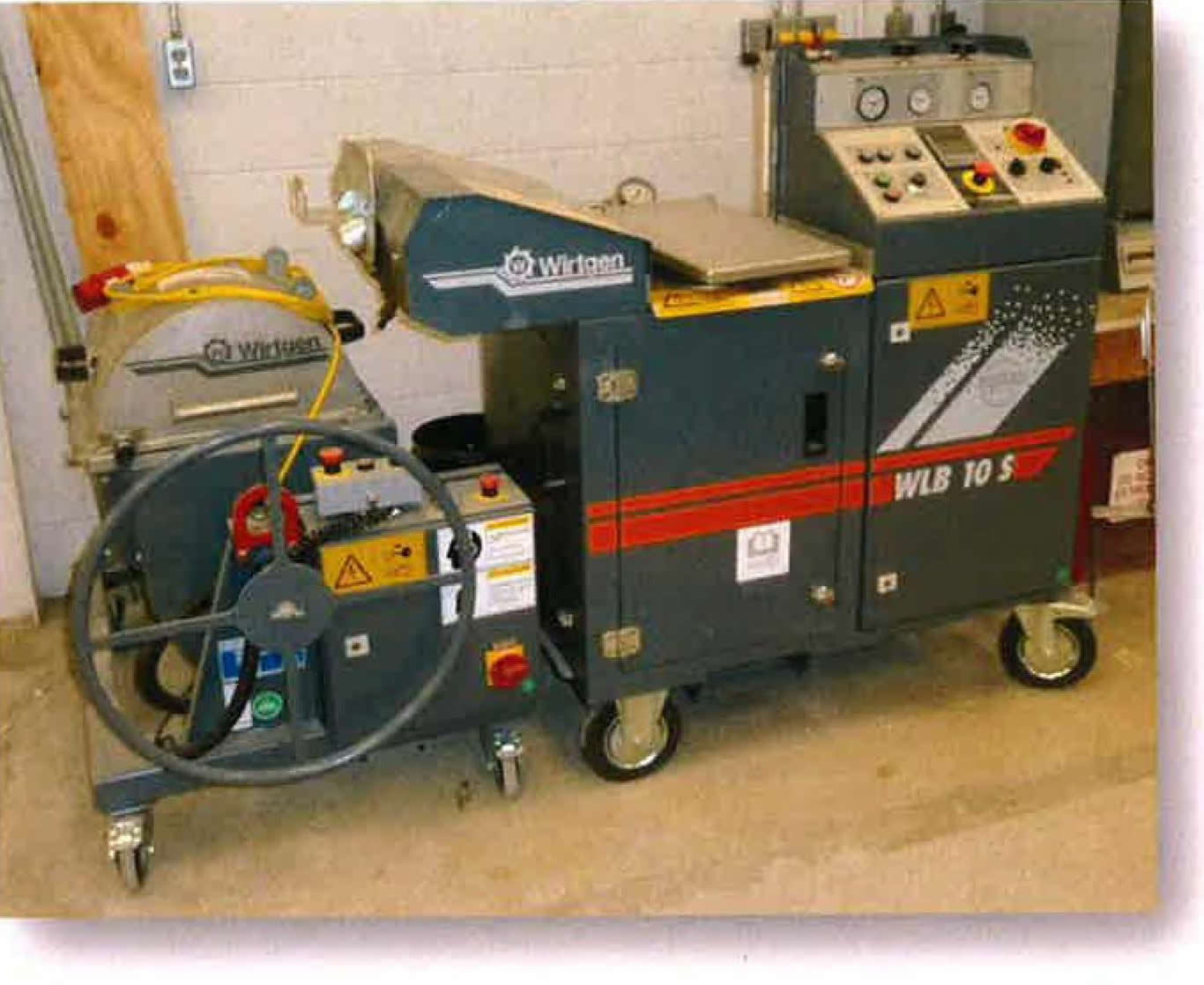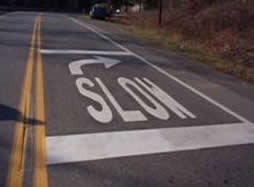TRC1301: |
|
TRC1302: |
| The Use of Non-Nuclear Devices for Quality Assurance |
|
Use of Chemical Admixtures to Increase the Effectiveness of Snow and Ice Removal |
 |
|
 |
The AHTD currently uses nuclear devices for quality assurance measurements of subgrade density, asphalt density, and asphalt mixes. The nuclear density gauge does not evaluate the strength of the subgrade or the structural uniformity of the lift compacted. If the Department’s goal is to seek a modulus based mechanistic design and performance specification for state highways then non-nuclear devices need to replace the nuclear devices for all quality assurance tests related to subgrade compaction, asphalt content and density.
Implementation of the devices in the construction field will save engineers and inspectors time due to the new devices’ relatively quick test methods and they do not require special handling and storage. The use of a non-nuclear device will save the Department time, money and improve safety. The non-nuclear device will replace all nuclear devices thus eliminating the Department’s need for a nuclear license with the Arkansas Health Department. This would also allow non-nuclear certified personnel to operate a density gauge. |
|
The primary benefit of this research is to determine what new and diverse chemicals work best for clearing snow and ice on roadways and bridges within the State. A cost/benefit analysis will be used to determine which materials are the most cost efficient. By using better materials, less material may be needed to get the same or better level of service during winter weather events, thus allowing maintenance dollars to be spread further.
A new web-based weather monitoring network established during this project will also benefit the Department. Having the ability to view the weather in remote and/or hard-to-access areas of the state will allow Maintenance personnel to more effectively utilize their resources in these remote areas. |
| Final Report |
|
Final Report |
|
| |
|
|
TRC1303: |
|
TRC1304: |
| Comparison of Texturing Methods Used for Highway Construction and Maintenance |
|
Foamed Warm Mix Asphalt Design Issues |
 |
|
 |
To test texture and skid resistance of pavement surfaces, several different methods are available. The Department currently utilizes a locked wheel tester, “skid truck”, to measure surface resistance during wet conditions (ASTM E274/E274M). The Department also uses an Automatic Road Analyzer (ARAN) to measure the texture depth. Other options for testing surface texture are a Circular Texture Meter (CT Meter), a Dynamic Friction Tester (DF Tester), the “Sand patch” test and an Outflow Meter. Both a CT Meter and DF Tester are available for loan through the Federal Highways Administration (FWHA) Friction, Texture, and Profile Measurement Equipment Loan Program at no charge.
The primary objective of this research is to develop guidelines on resurfacing techniques and/or texturing for pavement features that exist in Arkansas. The pavement features in the guidelines will include, but are not limited to: pavement type, traffic volume, location (urban or rural), and previous crash history. |
|
Data from Project TRC-1004 suggests that a WMA design should not be developed by simply altering a Hot Mix Asphalt (HMA) design by ‘plugging in’ a WMA additive. Thus, it is reasonable that the same would be true of the plant-foaming techniques. AHTD does not currently have a laboratory foamer, and as a result, has no mechanism for approving WMA mix designs that are intended to be generated by a plant-foaming technique. However, the majority of warm mix in Arkansas is produced using a plant-foaming technique. The results of the recently completed NCHRP project 9-43 indicate that a laboratory foamer is necessary for all WMA mix designs that will utilize plant-foaming techniques. In addition, recommendations have been made to append AASHTO R35 to require a laboratory foamer for the design of such mixes. Thus, an evaluation is necessary to determine how a laboratory foamer could or should be used for the purpose of WMA mix design approval in Arkansas. Additional investigations of WMA and RAP/RAS combinations in laboratory-foamed mixes will also be studied. |
| Final Report |
|
Final Report |
|
| |
|
|
TRC1305: |
|
TRC1306: |
| Low-Cost Experimental Treatments for Horizontal Curves |
|
Work Zone Capacity Estimation for High Truck Volume Routes in Arkansas... |


|
|
 |
The main objective of this project is to study the use of Low Cost Experimental Treatments to determine if run-off-the-road type crashes can be reduced in curves along Arkansas rural two-lane highways. Guidelines will be provided based on the best type of treatments at a specific location.
The benefits derived from this project will be finding cost-effective treatments to reduce crashes in horizontal curves. Compared to changing an alignment, these treatments will increase safety at a lower cost. Successful implementation of this project may result in saving large numbers of motorists’ lives in Arkansas. If found to be a cost effective way of reducing run-off-the-road type crashes in curves, these treatments will be installed at various locations in horizontal curves along Arkansas rural two-lane highways. |
|
Title 23 Code of Federal Regulations Subpart J-Work Zone Safety and Mobility requires that all states develop procedures to address work zone delays. Accurate prediction of highway work zone capacity is necessary to estimate travel delays, vehicle speeds and queuing patterns, and associated congestion. The prediction of traffic flow and congestion through work zones is complex and with many variables. There are many reasons for inaccuracies in the estimation of highway work zone capacities.
In addition to the reasons noted above, highway work zone capacities are affected by the type of construction and maintenance activities, duration of lane closure, adverse weather conditions and highway incidents. In addition, two definitions have been used for work zone capacities: pre-breakdown flow rate and post-breakdown queue discharge rate. Both are useful in analysis of work zones where the pre-breakdown flow rate helps with predicting the onset of congestion in a work zone, while the post-breakdown queue discharge rate helps with estimating the operations and queuing patterns after breakdown has occurred. This research will provide a mechanism to collect and analyze field data, determine local highway work zone capacity ranges for a specified set of field conditions and correlate the findings with similar research being conducted for highway work zones in other States efforts nationally. |
| Final Report |
|
|
|
| |
|
|
TR1307: |
|
TRC1308: |
| Invesitgating the Use of GPS Data Collection for Maintenance Operations |
|
Developing Embankment and Subgrade Stabilization Regional Specifications |
 |
|
 |
Locating maintenance activities has long been accomplished using the established County, Route, Section and Log Mile identification system. This system has served as the method to locate events and assets on the State's Highway System. District maintenance operations heavily rely on this system for reporting where work is performed. Currently, some assets and events that the AHTD has collected are stored in databases and have the primary fields (county, route, section and log miles) that allow the data to be linked to the Road Inventory and mapped on the Linear Referencing System (LRS) that is maintained by the Planning and Research Division. To take full advantage of this tool requires the use of a GIS platform, which, right now is not available to our Maintenance personnel in the field. While maintenance personnel do have the use of Route and Section maps, which report the begin and end log mile of the Highway System and the log miles of all bridges present on the Highway System, it still requires a lot of interpretation to find an accurate log mile to report. The use of a GIS platform based data collection process along with SiteManager will allow for the future needed Darwin ME calibration.
Public utilities and many other agencies have converted over to a global positioning system (GPS) using latitude and longitude. AHTD is also using this GPS system in several applications. However, the use of GPS for generating a database for maintenance activities has not reached the District Maintenance personnel. An investigation into the use of GIS data collection for maintenance operations is needed. A procedure for utilizing this data into a GIS environment would then be developed. |
|
Currently, the Arkansas State Highway and Transportation Department (AHTD) does not have a standard specification or (set of) guidelines for embankment and subgrade stabilization on statewide or regional level. This project would consider the stabilization of subgrades and embankments up to ten feet in height based on geological regions. Stabilization methods to be considered include, but are not limited to: undercut and backfill, select material, geotextiles, cement stabilization and lime stabilization. Along with establishing guidelines for stabilization, this project would also establish testing protocols for preliminary design and construction |
| |
|
Final Report |